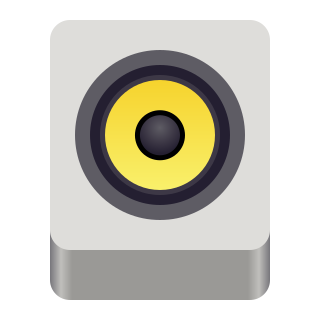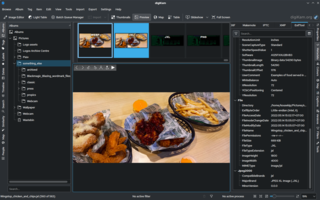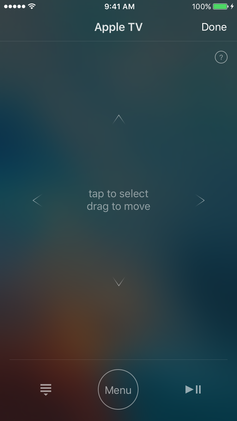Related Research Articles

MP3 is a coding format for digital audio developed largely by the Fraunhofer Society in Germany under the lead of Karlheinz Brandenburg, with support from other digital scientists in the United States and elsewhere. Originally defined as the third audio format of the MPEG-1 standard, it was retained and further extended — defining additional bit-rates and support for more audio channels — as the third audio format of the subsequent MPEG-2 standard. A third version, known as MPEG-2.5 — extended to better support lower bit rates — is commonly implemented, but is not a recognized standard.

MIDI is a technical standard that describes a communications protocol, digital interface, and electrical connectors that connect a wide variety of electronic musical instruments, computers, and related audio devices for playing, editing, and recording music.

Digital music technology encompasses digital instruments, computers, electronic effects units, software, or digital audio equipment by a performer, composer, sound engineer, DJ, or record producer to produce, perform or record music. The term refers to electronic devices, instruments, computer hardware, and software used in performance, playback, recording, composition, mixing, analysis, and editing of music.

iTunes is a software program that acts as a media player, media library, mobile device management utility, and the client app for the iTunes Store. Developed by Apple Inc., it is used to purchase, play, download, and organize digital multimedia, on personal computers running the macOS and Windows operating systems, and can be used to rip songs from CDs, as well as play content with the use of dynamic, smart playlists. Options for sound optimizations exist, as well as ways to wirelessly share the iTunes library.
Finale is a proprietary music notation software developed and released by MakeMusic for Microsoft Windows and macOS since 1988.

Audacity is a free and open-source digital audio editor and recording application software, available for Windows, macOS, Linux, and other Unix-like operating systems.
Steinberg Media Technologies GmbH is a German musical software and hardware company based in Hamburg. It develops music writing, recording, arranging, and editing software, most notably Cubase, Nuendo, and Dorico. It also designs audio and MIDI hardware interfaces, controllers, and iOS/Android music apps including Cubasis. Steinberg created several industry standard music technologies including the Virtual Studio Technology (VST) format for plug-ins and the ASIO protocol. Steinberg has been a wholly owned subsidiary of Yamaha since 2005.

Pro Tools is a digital audio workstation (DAW) developed and released by Avid Technology for Microsoft Windows and macOS. It is used for music creation and production, sound for picture and, more generally, sound recording, editing, and mastering processes.

Audio editing software is any software or computer program which allows editing and generating of audio data. Audio editing software can be implemented completely or partly as a library, as a computer application, as a web application, or as a loadable kernel module. Wave editors are digital audio editors. There are many sources of software available to perform this function. Most can edit music, apply effects and filters, and adjust stereo channels.

Rhythmbox is a free and open-source audio player software, tag editor and music organizer for digital audio files on Linux and Unix-like systems.
capella is a musical notation program or scorewriter developed by the German company Capella Software AG, running on Microsoft Windows or corresponding emulators in other operating systems, like Wine on Linux and others on Apple Macintosh. Capella requires to be activated after a trial period of 30 days. The publisher writes the name in lower case letters only. The program was initially created by Hartmut Ring, and is now maintained and developed by Bernd Jungmann.

A tag editor is an app that can add, edit, or remove embedded metadata on multimedia file formats. Content creators, such as musicians, photographers, podcasters, and video producers, may need to properly label and manage their creations, adding such details as title, creator, date of creation, and copyright notice.

Mixxx is free and open-source software for DJing. It is cross-platform and supports most common music file formats. Mixxx can be controlled with MIDI and HID controllers and timecode vinyl records in addition to computer keyboards and mice.
muvee Technologies is a Singapore-based company, best known for its video editing software for Windows. In 2001, muvee launched the award-winning autoProducer for PCs and in 2005 became the first to offer mobile video editing software on the Symbian 3 platform for the Nokia 7610. In 2006 it announced its automatic slideshow creation engine in the Nikon Coolpix S5. In 2014, muvee launched Action Studio, a mobile video editing app for action cam users, following up with ReAction, an app which creates dramatic slomo video sequences for both iOS and Android.
The stutter edit, or stutter effect, is the rhythmic repetition of small fragments of audio, occurring as the common 16th note repetition, but also as 64th notes and beyond, with layers of digital signal processing operations in a rhythmic fashion based on the overall length of the host tempo. The Stutter Edit audio software VST plug-in implements forms of granular synthesis, sample retrigger, and various effects to create a certain audible manipulation of the sound run through it, in which fragments of audio are repeated in rhythmic intervals. The plug-in allows musicians to manipulate audio in real time, slicing audio into small fragments and sequences the pieces into rhythmic effects, recreating techniques that formerly took hours to do in the studio. Electronic musician Brian Transeau is widely recognized for pioneering the stutter edit as a musical technique; he developed, coined the term, and holds multiple patents for the Stutter Edit software plug-in.

iTunes Remote is a software application developed by Apple Inc. for iOS devices that allows for remote control of Apple TV or iTunes library in an area with Wi-Fi connectivity using the proprietary Digital Audio Control Protocol (DACP). It is currently available as a free download from the App Store for iOS devices such as iPhone, iPod Touch, iPad, and Apple Watch.

AIMP is a freeware audio player for Windows, Android and Linux, originally developed by Russian developer Artem Izmaylov. It supports a variety of audio codecs, and includes tools to convert audio files and edit their metadata, as well as the capability of installing user-made skins and plugins.
WavePad Audio Editor Software is an audio and music editor for Windows and Mac. It lets users record and/or edit music, voice and other audio recordings. As an editor, users can cut, copy, paste, delete, insert, silence, and auto-trim recordings, then add effects like amplify, normalize, equalize, envelope, reverb, echo, reverse, and more with the help of VST plugin support and a free stock audio library.
References
- ↑ "News, Features, Reviews, Forums and Resources for the Professional Content Creator | Creative Planet Network". Digitalcontentproducer.com. Retrieved 2016-07-16.
- ↑ "The Kleper Report on Digital Publishing 1.4". Printerport.com. Retrieved 2016-07-16.
- ↑ "Archived copy". www.encyclopedia.com. Archived from the original on 14 November 2009. Retrieved 17 January 2022.
{{cite web}}: CS1 maint: archived copy as title (link) - ↑ "United States Patent: 8918721". Patft1.uspto.gov. Retrieved 2016-07-16.
- ↑ "Music for a Song | Business solutions from AllBusiness.com". www.allbusiness.com. Archived from the original on 30 January 2008. Retrieved 17 January 2022.
- ↑ "AirWorks Releases TuneBuilder 2.0 for Win 95. - Free Online Library". Thefreelibrary.com. Retrieved 2016-07-16.
- ↑ "Apps - Access My Library - Gale". Access My Library. Retrieved 2016-07-16.